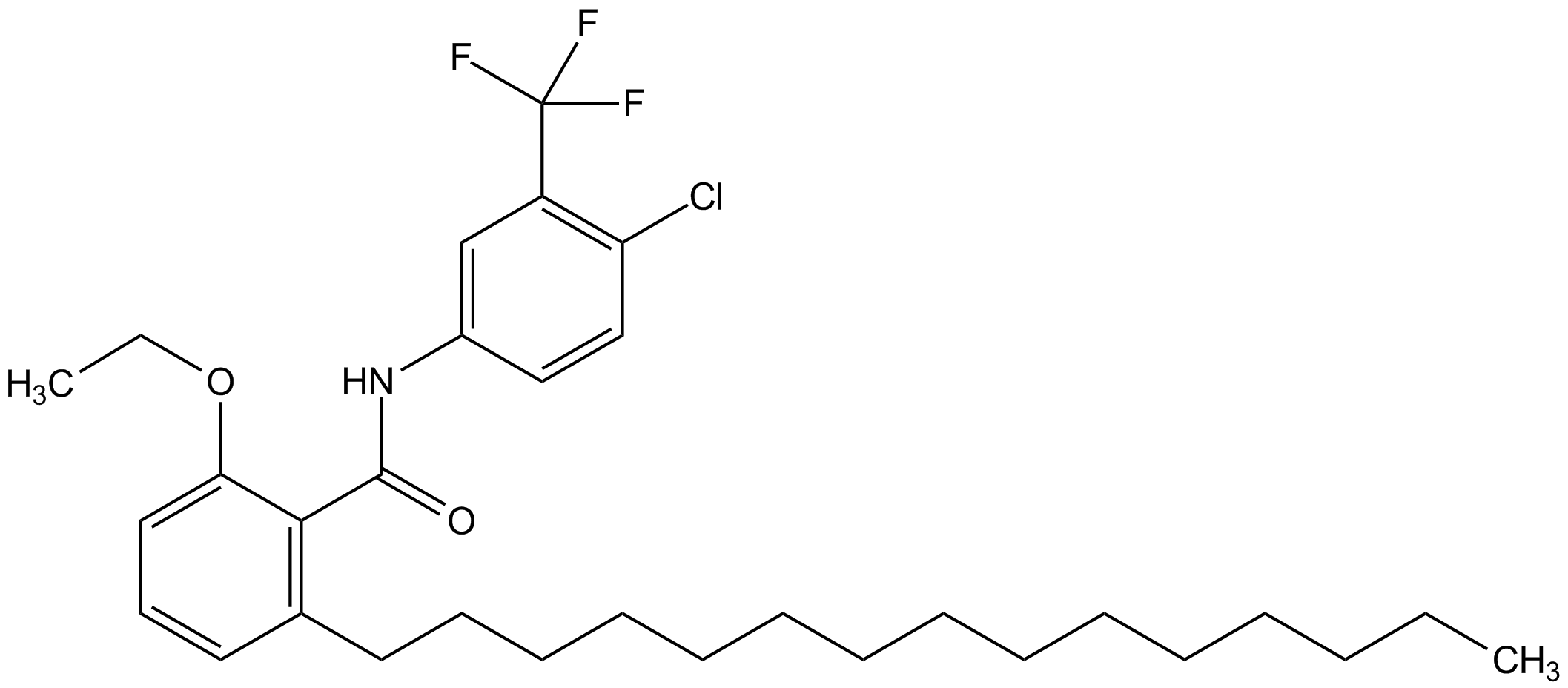
Chemical Structure
CTPB [586976-24-1]

AG-CR1-0141
Overview
- SupplierAdipoGen Life Sciences
- Product NameCTPB [586976-24-1]
- Delivery Days Customer10
- CAS Number586976-24-1
- CertificationResearch Use Only
- Estimated Purity>98%
- Molecular FormulaC31H43ClF3NO2
- Molecular Weight554.1
- Scientific DescriptionChemical. CAS: 586976-24-1. Formula: C31H43ClF3NO2. MW: 554.1. Potent activator of p300 HAT (histone acetyltransferase) activity, which has an important role in regulation of gene expression. Does not show PCAF (p300/CBP-associated factor) HAT activities. Membrane-impermeable that requires a carrier to pass the membrane barrier of cells. - Potent activator of p300 HAT (histone acetyltransferase) activity, which has an important role in regulation of gene expression. Does not show PCAF (p300/CBP-associated factor) HAT activities. Membrane-impermeable that requires a carrier to pass the membrane barrier of cells.
- SMILESCCCCCCCCCCCCCCCC1=C(C(=O)NC2=CC(=C(Cl)C=C2)C(F)(F)F)C(OCC)=CC=C1
- Storage Instruction-20°C,2°C to 8°C
- UNSPSC12352200
References
- Small molecule modulators of histone acetyltransferase p300: K. Balasubramanyam, et al.; J. Biol. Chem. 278, 19134 (2003)
- Activation of p300 histone acetyltransferase by small molecules altering enzyme structure: probed by surface-enhanced Raman spectroscopy: K. Mantelingu, et al.; J. Phys. Chem. B. 111, 4527 (2007)
- Synthesis of benzamides related to anacardic acid and their histone acetyltransferase (HAT) inhibitory activities: J.A. Souto, et al.; ChemMedChem 3, 1435 (2008)
- Intrinsically fluorescent carbon nanospheres as a nuclear targeting vector: delivery of membrane-impermeable molecule to modulate gene expression in vivo: B.R. Selvi, et al.; Nano Lett. 8, 3182 (2008)
- Exploring the binding affinities of p300 enzyme activators CTPB and CTB using docking method: B. Devipriya, et al.; Indian J. Biochem. Biophys. 47, 364 (2010)
- Charge density distribution and the electrostatic moments of CTPB in the active site of p300 enzyme: a DFT and charge density study: B. Devipriya & P. Kumaradhas; J. Theor. Biol. 335, 119 (2013)
